

| Cover: Zhou Ying
| Editor in charge: Li Mingkang
Open source, in 2021, is on fire, and it is a raging fire, burning the sky and the earth. It can be said that it is the first year of the rapid development of open source in China. We have seen that in the field of open source, the key support of national policies, the increased favor of capital, the joint promotion of the community, and the continuous deepening of education... These all indicate a trend - China's open source has reached a high level , high-quality and high-level situation is constantly advancing, and it is in the key historical stage of the rising period of the development curve.
At this stage, how to observe the current situation of China's open source, how to predict the development direction of China's open source, and how to make China's open source better embrace the world stage will become an important research topic. As the earliest open source community consortium in China with the mission of "open source governance, international integration, community development, and open source projects", Kaiyuan Society was determined to promote the development of open source in China as early as 2014. It's been four years. In 2021, together with many friends in the open source community, we will slowly start from the four aspects of open source developer questionnaire, Github/Gitee data, open source commercialization and open source memorabilia to produce this "2021 China Open Source Annual Report", in an effort to provide All friends who are concerned about China's open source have drawn a clear, professional and valuable annual picture of China's open source.
Part1 Report - Preface
2022 has come, and there is a joke on the Internet, saying that this is just "2020 too", and January 2022 is only the 25th month of 2020. It looks like nothing has changed, we are still in the midst of COVID. However, from another perspective, the world is undergoing great changes, and the world we live in is moving in an unknown direction at a high speed.
For China's open source, the key word in 2021 should be "running". The signs are already very obvious. The Information Technology Development Department of the Ministry of Industry and Information Technology issued the "14th Five-Year Plan" Software and Information Technology Service Industry Development Plan, which is a typical signal that the open source field is about to take off. From walking on the ground to flying in the sky, these are two completely different stages. And 2021 is the run-up stage before takeoff. From the ground to the sky means that the entire pattern of behavior changes profoundly. Originally, we only needed to think about the path and direction in a two-dimensional plane, but in the sky, in three-dimensional space, we have countless choices.
Although we can't predict and grasp the state of the future and the air, but: everyone is running hard and moving forward.
In last year's China Open Source Annual Report, we summarized three trends. In this year's report, we simply added the "Open Source Events" column, summarizing ten trends. So in this preface, let's talk about our feelings.
out of the circle
Open source is not only getting more and more popular, but it has also sparked various discussions among friends outside the circle. First, investors with a keen sense of smell began to pay attention to the "track" of open source, and then based on the background of Sino-US confrontation, many people began to discuss open source from the perspective of international politics, national strength, and national security (this was originally purely technical. category). Until recently, several open source software security incidents have made everyone talk about it. Such a mixed phenomenon may continue.
Ecological Responsibility
When open source was just a niche hobby, it was free to do almost anything. However, at a time when software is eating the world and open source is eating software, open source technology has become one of the infrastructures of the entire world. With great power comes great responsibility. The wider the application, the higher the risk. How should we think about and ensure the security of open source supply chains ? How should we build a healthier open source ecosystem? In such an ecosystem, how should the responsibilities of all parties be defined?
Sense of history
The Open Source Society has released the China Open Source Annual Report for the fourth consecutive year, and has also held the 6th China Open Source Annual Conference . Constantly, in our exchanges with friends, we often talk about: What if we do open source things for another 10 years or 20 years? If in another 10 or 20 years, we will come back to see us open source people, what are the things we have done right? What went wrong? Which should be done earlier? This kind of feeling is a kind of "sense of history". When we do these things more with such a sense of history and with the mentality that people will look back on them in the future, how should we choose? How should we act?
Of course, a journey of a thousand miles begins with a single step. The future we yearn for infinitely can only be shaped by our little efforts. Let's share with you!
Zhuang Biaowei, Director of the 2021 Open Source Society
January 14, 2022

2021 China Open Source Annual Report - Cover

2021 China Open Source Annual Report - Table of Contents 1
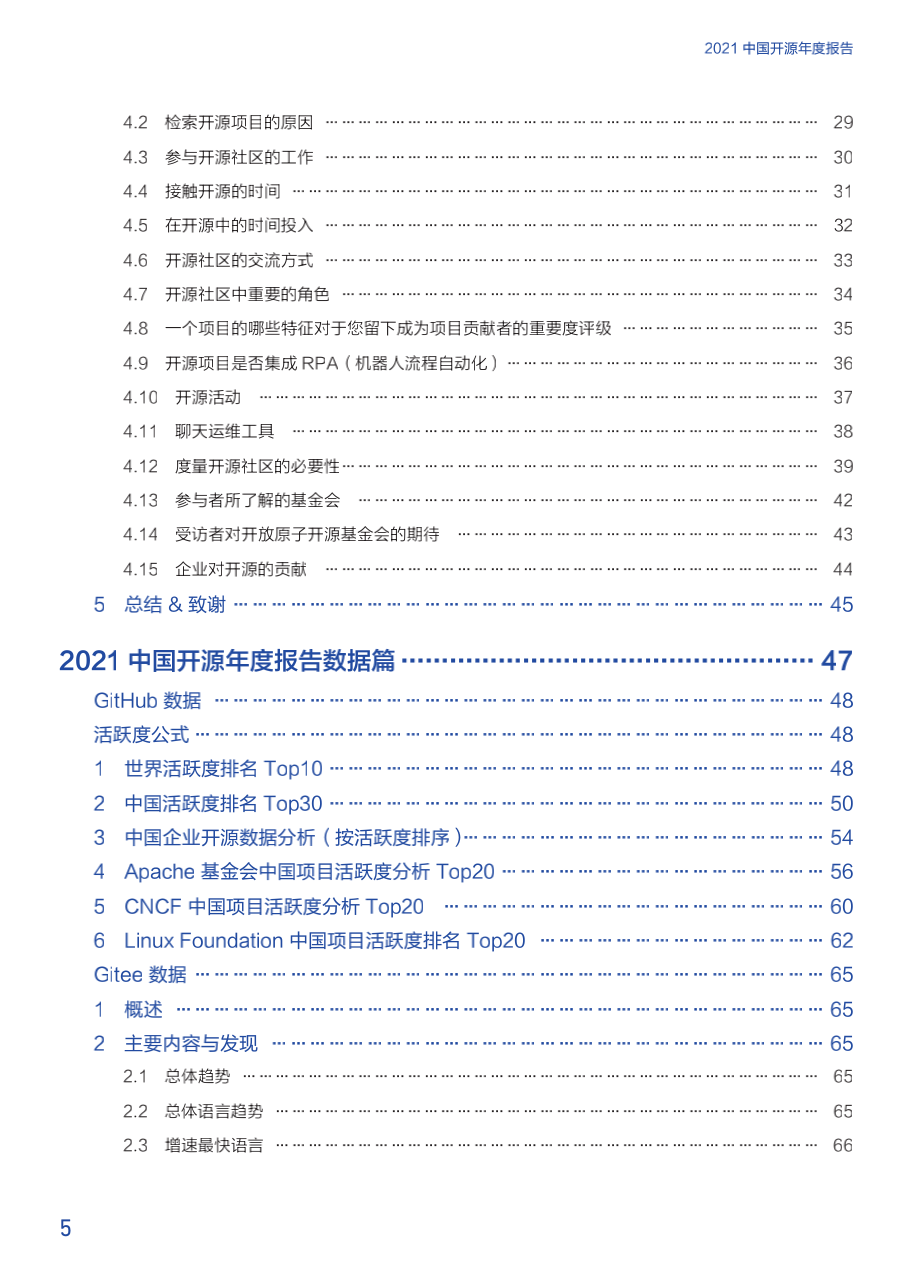
2021 China Open Source Annual Report - Table of Contents 2
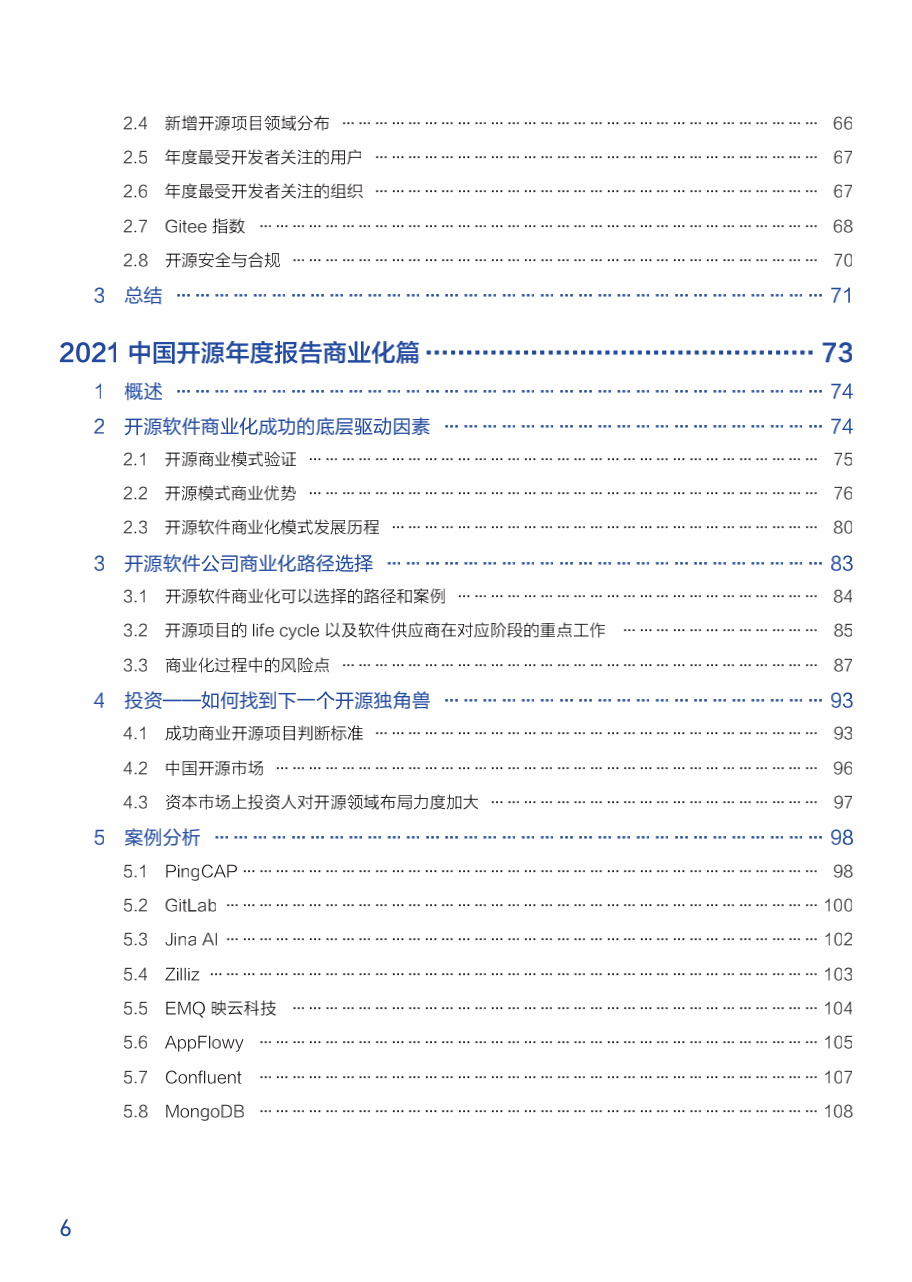
2021 China Open Source Annual Report - Table of Contents 3
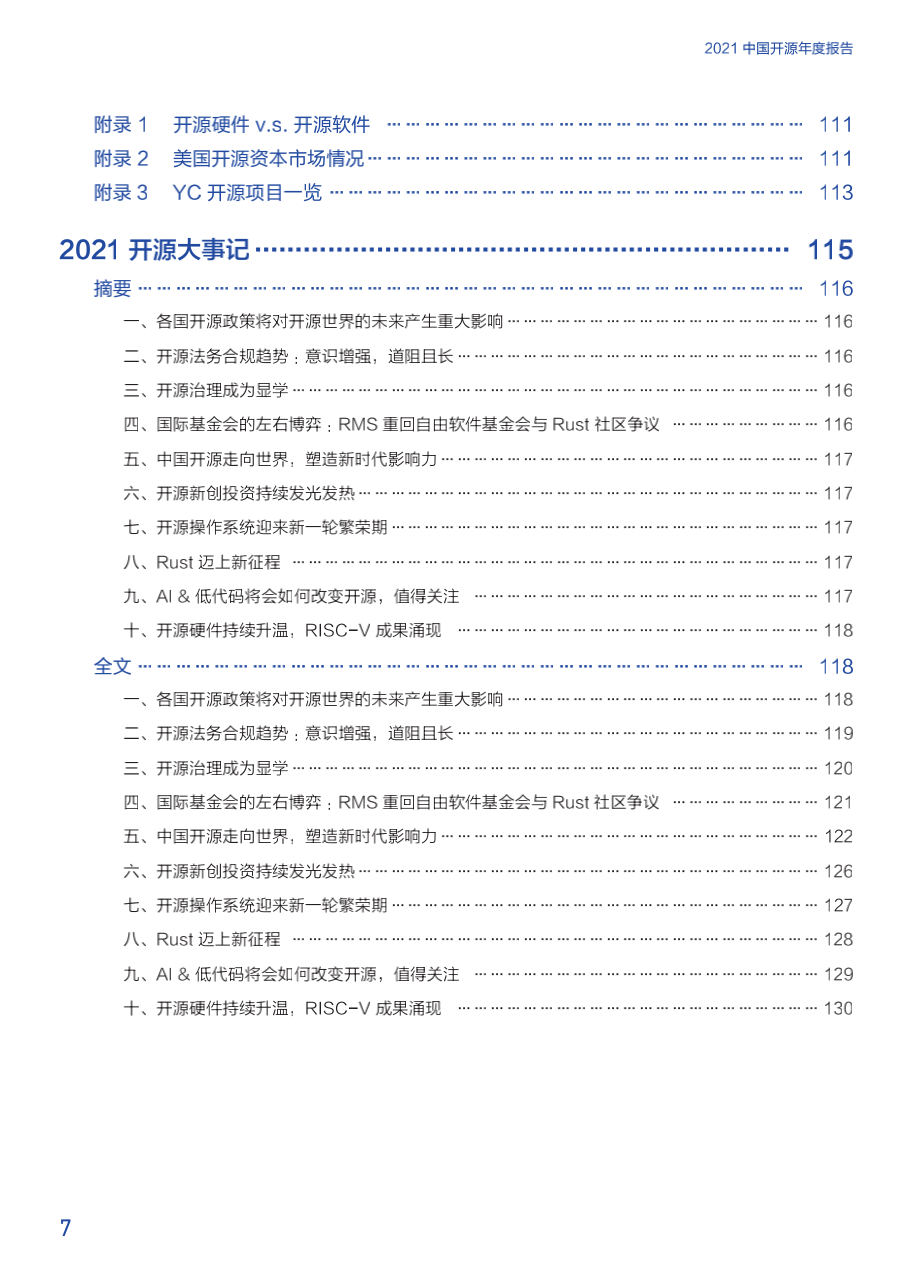
2021 China Open Source Annual Report - Table of Contents 4
Pay attention to the open source social account
Backstage reply to " 2021 China Open Source Annual Report " to receive the full version of the report
Part 2 overall report overview
The 2021 China Open Source Annual Report is mainly composed of four parts, namely the questionnaire , data , commercialization and 2021 open source memorabilia .
1 Questionnaire
At the beginning of 2016, the Open Source Society released the "2015 China Open Source Community Participation Survey Report" [1]. In the following years, it has continued to publish developer survey reports, aiming to present the domestic open source development from various dimensions. This year, we set off again to draw a map of China's open source world in 2021 by combining data analysis methods and survey reports.
This questionnaire is an important part of the China Open Source Annual Report every year, and the analysis report not based on research is just talk on paper. The questionnaire is carried out from two perspectives, including personal information (including job information and developer technical information) and open source community participation. Unlike previous years, this year we have added topics related to open source community metrics and open source commercialization. Welcome everyone Participate in the questionnaire and express your thoughts.
Through the statistical investigation and analysis of about 44 issues, we hope to restore the real status quo of the current Chinese open source community, so as to provide an authoritative reference for open source later generations.
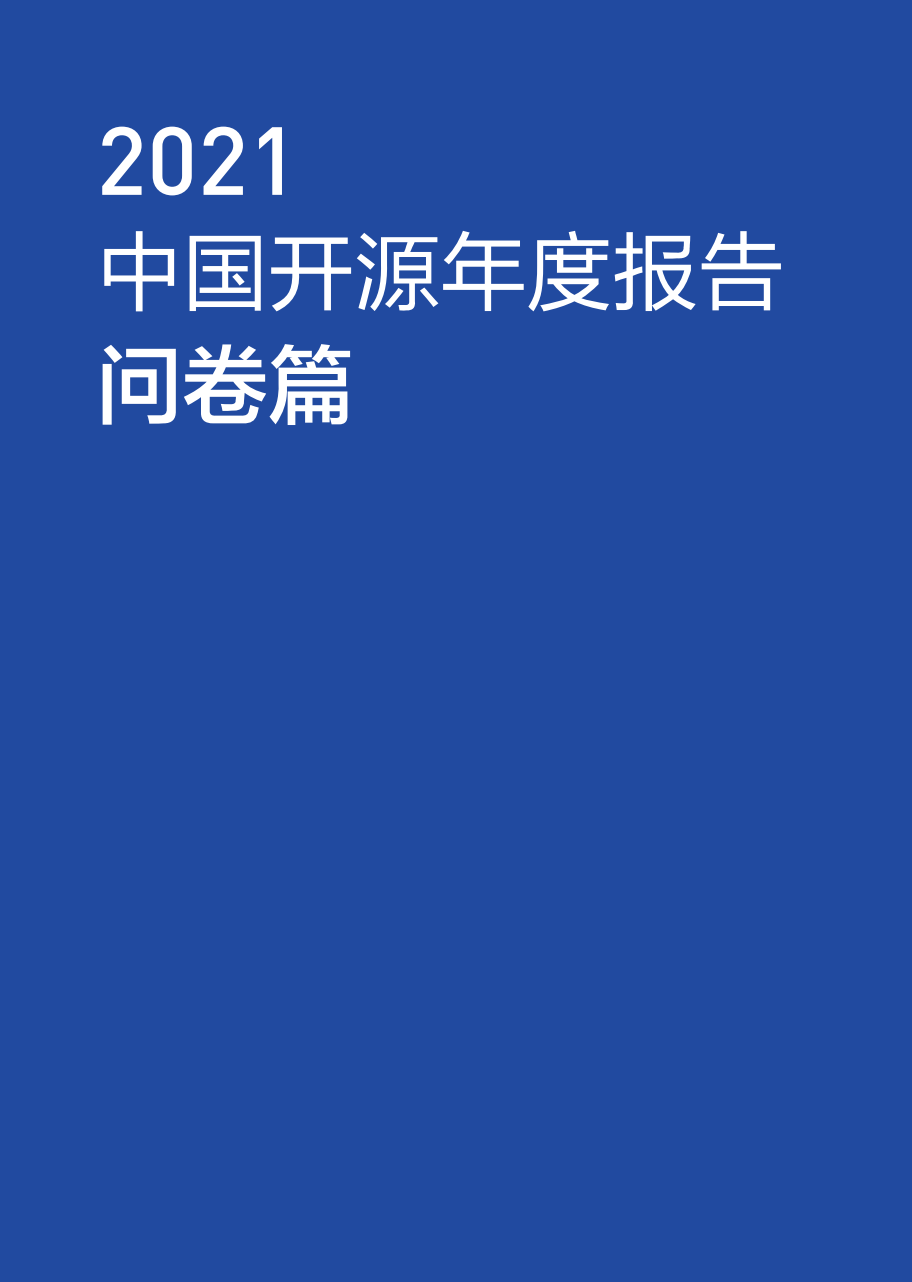
2021 China Open Source Annual Report - Questionnaire
2 data articles
The data of this report is jointly produced by X-lab laboratory (Github part) and Gitee.
The Github part analyzes and compares the Chinese open source projects hosted on it in a targeted manner, provides ranking indicators according to the self-developed formula, and provides a punch map of the working hours of the top open source projects, including the top 10 in the world's activity rankings , Top 30 in China 's activity ranking , Chinese enterprise open source data analysis (sorted by activity) . In addition, the Apache Foundation, the CNCF Foundation and the Linux Foundation have also ranked the projects in China by their activity.
The Gitee part conducts a statistical analysis of the open source projects hosted on Gitee, sorts out and interprets the changing trends of programming languages and function distribution, and analyzes the participation of developers in open source in Gitee, in order to provide a "local platform" perspective for observing the evolution of domestic open source. .
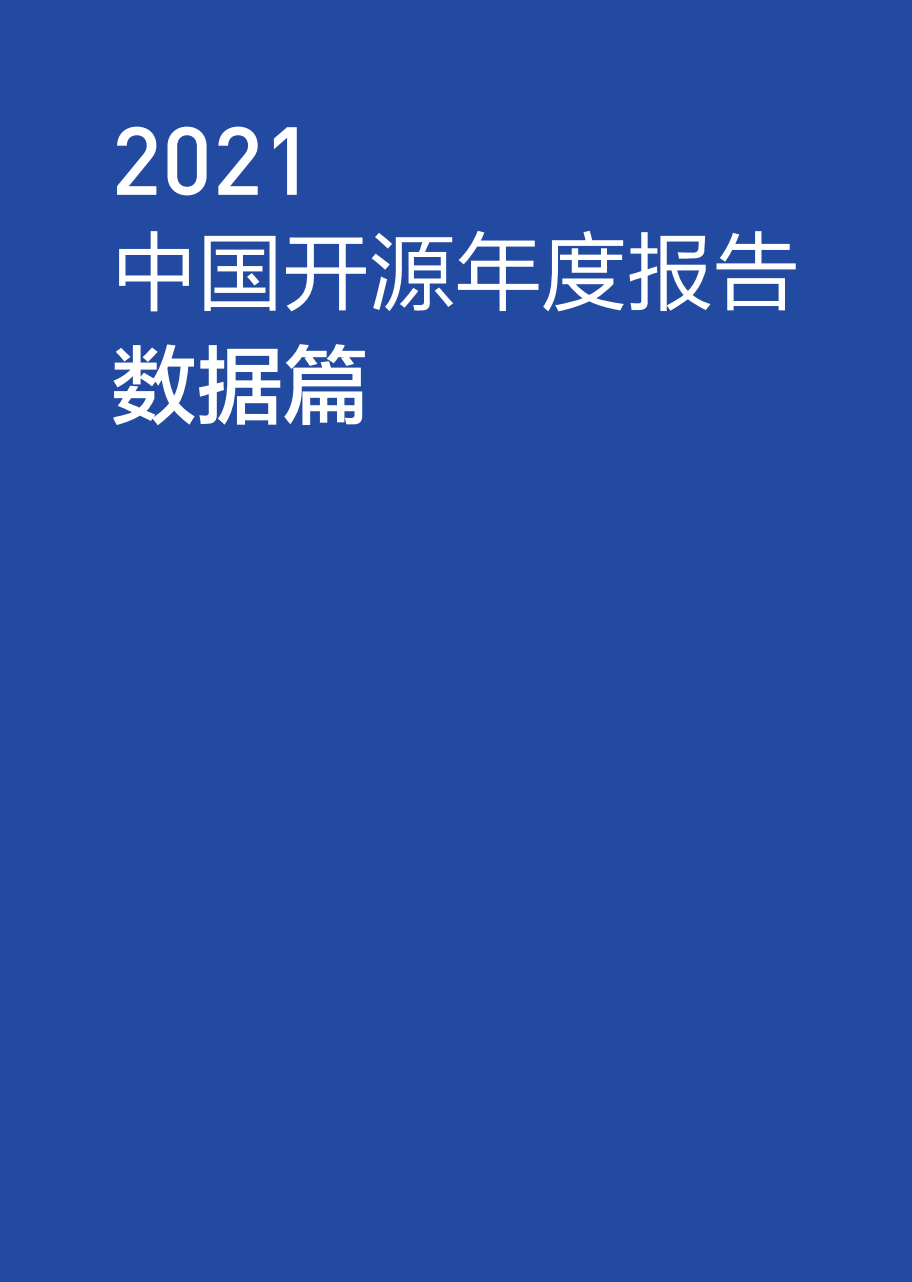
2021 China Open Source Annual Report - Data
3 Commercialization
The term "Open Source" was born in 1998, and this new formulation appeared largely to eliminate the vague understanding of "Free" in Free Software and make it more business-friendly. It can be said that there is no contradiction between open source software and commercialization from the beginning of its birth, and open source does not mean free . In recent years, with the outstanding performance of some open source companies in the capital market, the awareness of open source commercialization in the domestic developer community and investor groups has gradually increased. The unique development model of open source has created huge potential commercial value, attracting developers, technology companies, investment institutions and other parties to invest in the open source industry.
Although it is an indisputable fact that open source enterprises can realize monetization, it is still a difficult problem that plagues every open source enterprise to choose which model can be the most efficient for commercial development. There are five types of open source commercialization models: Support, Hosting, Restricted License, Open Core, and Hybrid License. In the current open source market, hosting, open core, and hybrid licenses are the most adopted by mainstream technology companies, but enterprises should choose business paths based on their own communities and product conditions.
The capital side is an important participant in promoting the development of the open source market. For investment institutions, the following points are often considered comprehensively when judging an open source project: in the product development stage, the focus is on whether the company has code ownership and control rights and whether it has international competitiveness; in the community operation stage, it mainly depends on the company. Whether it has sufficient operational capabilities; and in the commercialization exploration stage, the market matching capability and the maturity of the business model will become the main focus.
As the earliest organization in the field to pay attention to and continue to cultivate open source, Yunqi Capital has successfully discovered and invested in PingCAP, Zilliz, Jina AI and other open source enterprises in the early stage.
The content of this chapter is written by the investment team of Yunqi Capital. The main contents include:
-
The underlying drivers of successful commercialization of open source software
-
Possible commercialization paths for open source software companies
-
Open source project investor judgment criteria and case sharing
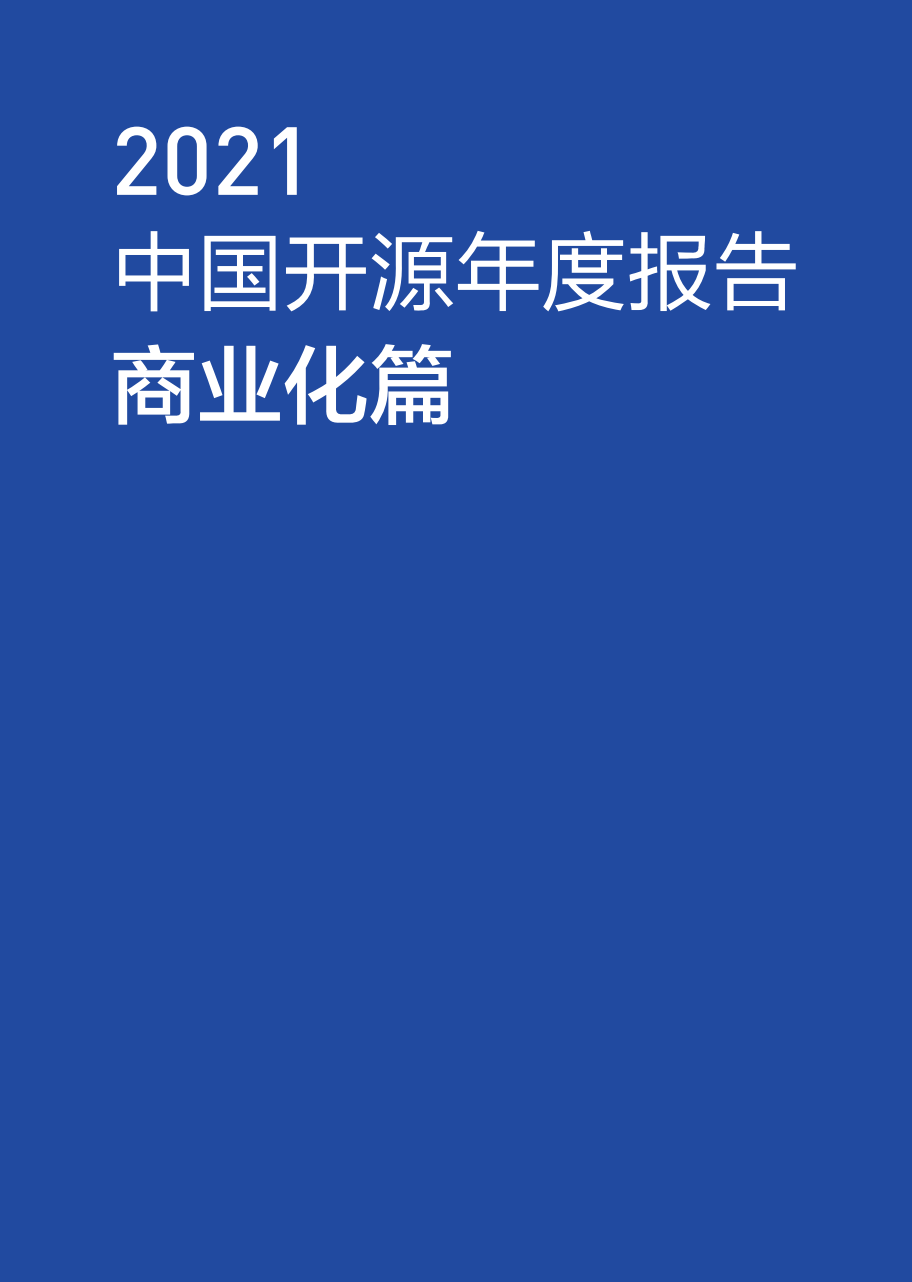
2021 China Open Source Annual Report - Commercialization
4 2021 Open Source Events
This part is a new feature of the 2021 China Open Source Annual Report. Our editorial board teachers have sorted out the top ten events in the open source world in 2021 that we think can be called memorabilia.
The editor thinks that this part is very well written, but the full text is a little longer. Wechat here is only a preview. I would like to thank Ms. Cai Fangfang for the summary version, so that you can have a sneak peek.
1. The open source policies of various countries will have a major impact on the future of the open source world
In 2021, many countries will issue policies to elevate open source to a strategic level at the national level, affirm the importance of the open source model to information technology innovation and the development of the software industry, and regard the prosperity of the open source ecosystem as an important task. The "14th Five-Year Plan" Software and Information Technology Service Industry Development Plan is a typical example.
2. Trends in open source legal compliance: increased awareness, obstacles and longevity
With the increasing use of open source code in all walks of life, some open source projects have become "big business" and discussions around open source legal and compliance topics have taken center stage. Events such as China's first judgment to clarify the legal effect of the GPL 3.0 agreement, and the settlement of Oracle v. Google's copyright infringement case show that the software industry is becoming more aware of open source legal affairs and compliance.
3. Open source governance has become an obvious learning
Open source software security incidents occur frequently, and open source software supply chain governance is becoming increasingly important. The Linux Foundation actively promotes the integration and exchange of OpenChain domestic and foreign communities, and the China Academy of Information and Communications Technology and many domestic enterprises pay close attention or join. In addition, how to open source enterprises, project open source process, open source project measurement and other issues are also the focus of the industry. Various evaluations of community governance effects based on quantitative models have become the "standard" for more and more mature open source organizations. CHAOSS, an open source project to measure open source projects and community health, promoted by the Linux Foundation, is worthy of attention.
4. The left-right game of international foundations: RMS returns to the Free Software Foundation and the Rust community dispute
Open source software projects require the cooperation of different entities, and conflicts within the community will undoubtedly have a negative impact on the development and maintenance of software projects. In 2021, the return of Richard M. Stallman, the father of free software, to the Free Software Foundation caused intense controversy, and the Rust community Moderation Team resigned collectively due to dissatisfaction with the core team, all of which exposed the complex situation and governance faced by the free and open source software community. problem.
5. China's open source to the world, shaping the influence of the new era
The influence of Chinese developers in the open source world is increasing. According to the latest GitHub annual developer report, in 2021, there will be nearly 1.03 million new developers in China on GitHub, with a total of about 7.55 million. In ASF, LF, CNCF and other international open source foundations, there are more and more open source projects originating from China, and at the same time, more Chinese open source people have been elected to important positions in international foundations.
6. Open source new venture investment continues to shine
From the end of 2020 to the end of 2021, start-ups based on open source projects at home and abroad are unprecedentedly active, and it is not uncommon for commercial companies based on open source projects to obtain financing and listing, and the amount of financing and valuation/market value continue to refresh the upper limit, the business of open source communities and open source software. Value is recognized by capital.
7. Open source operating systems usher in a new round of prosperity
At the end of 2020, RedHat announced that it would end support for CentOS 8 by the end of 2021. Users around the world began to try to find a suitable operating system to replace, and timely solutions to the risks that users may face after CentOS exits have become the efforts of operating system manufacturers and developers. direction, which makes the open source operating system usher in a new period of vigorous development in 2021.
8. Rust embarks on a new journey
In 2021, the Rust Foundation was jointly established by Mozilla, Amazon, Huawei, Google, and Microsoft, and Rust finally bid farewell to "turbulence". In addition, the Linux community has also shown a positive attitude towards Rust, and the Rust for Linux project is progressing smoothly in the second half of 2021, and developers are expected to see the Linux kernel officially support Rust in 2022.
9. How AI & low code will change open source, it is worth paying attention to
Open source work in the age of artificial intelligence is facing new challenges. The GitHub Copilot tool released this year, which uses machine learning technology to provide code suggestions/autocompletion, has caused quite a bit of controversy. Many developers believe that GitHub Copilot's claims of training based on public code are actually wanton "plagiarism" of open source code without following the open source license.
10. Open source hardware continues to heat up, and RISC-V results emerge
The popularity of open source hardware continues to grow as the market demand for custom hardware increases and as more startups seek accelerators and solutions for building highly suitable AI/ML algorithms. And with the advent of the RISC-V processor ISA, open source hardware has become a reality. At the same time, RISC-V has received more and more attention and investment in China, and more and more outstanding results have emerged.

2021 China Open Source Annual Report-2021 Open Source Events
Part3 thanks
The compilation of the "2021 China Open Source Annual Report" has been strongly supported by many friends in the open source community, volunteers of the Open Source Society and members of the Open Source Society Advisory Committee . I would like to express my sincere thanks to all those who participated in the production of the report! Thank you for your contribution to China's open source!
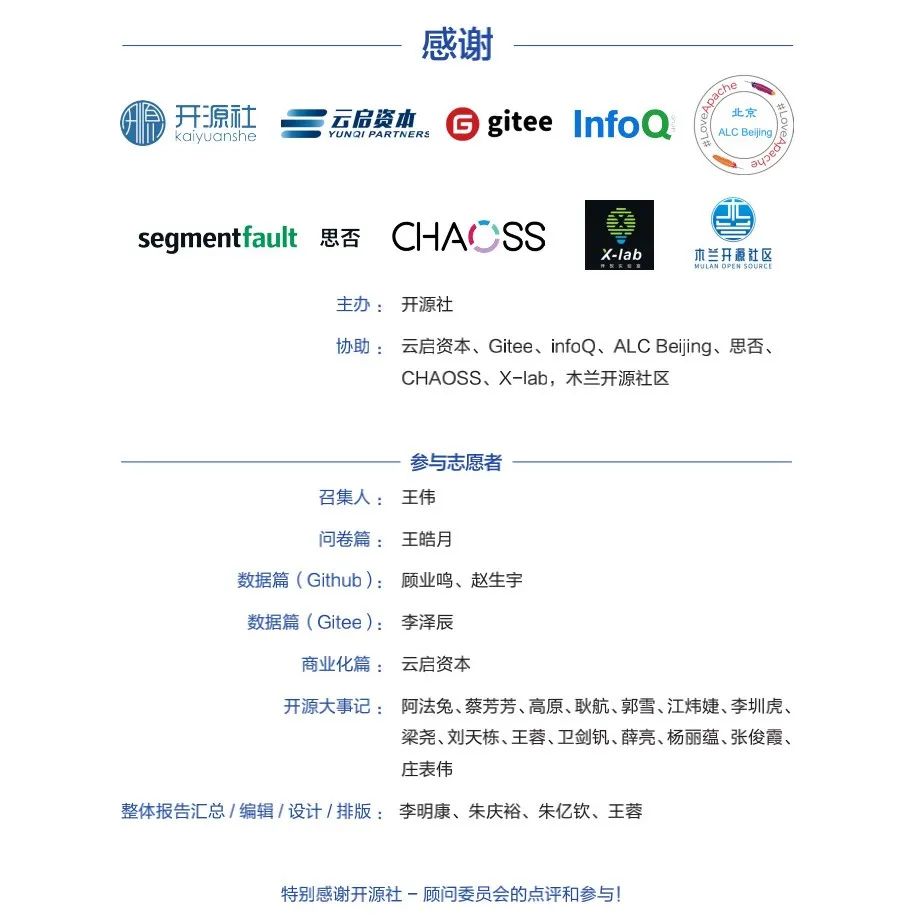
Thanks to the above teams and people who participated in the production of the report!
Pay attention to the open source social account
Backstage reply to " 2021 China Open Source Annual Report " to receive the full version of the report
Or click to read the original text and go to the official website of the Open Source Society to download
References
[1]Previous China Open Source Annual Reports: https://kaiyuanshe.cn/categories/Document/
Related Reading | Related Reading
2020 China Open Source Annual Report
Big launch: 2019 China Open Source Annual Report
2018 China Open Source Annual Report Officially Released l COSCon'18 Special
"2015 China Open Source Participation Survey Report" released
Introduction to Open Source
Founded in 2014, Kaiyuan Society is composed of individual members who voluntarily contribute to the cause of open source. It is formed according to the principles of "contribution, consensus, and co-governance", and always maintains the characteristics of vendor neutrality, public welfare, and non-profit. An open source community consortium with the mission of "international integration, community development, and open source projects". The Open Source Society actively cooperates closely with the communities, enterprises and relevant government units that support open source. With the vision of "based on China and contributing to the world", it aims to jointly create a healthy and sustainable open source ecosystem, and promote the Chinese open source community to become an active member of the global open source system. Participants and contributors.
In 2017, the Open Source Society was transformed to be composed entirely of individual members, and operated with reference to the governance models of top international open source foundations such as ASF. In the past seven years, it has linked tens of thousands of open source people, gathered thousands of community members and volunteers, hundreds of lecturers at home and abroad, and cooperated with nearly 100 sponsors, media and community partners.
This article is shared from the WeChat public account - Kaiyuanshe KAIYUANSHE (kaiyuanshe).
If there is any infringement, please contact [email protected] to delete it.
This article participates in the " OSC Yuanchuang Project ", you are welcome to join and share with us.



